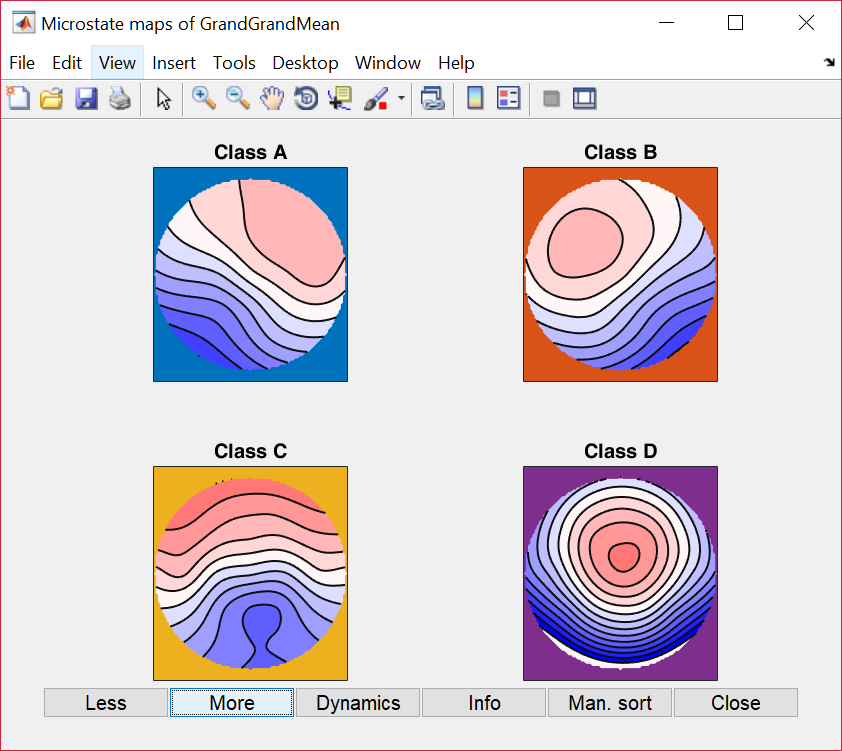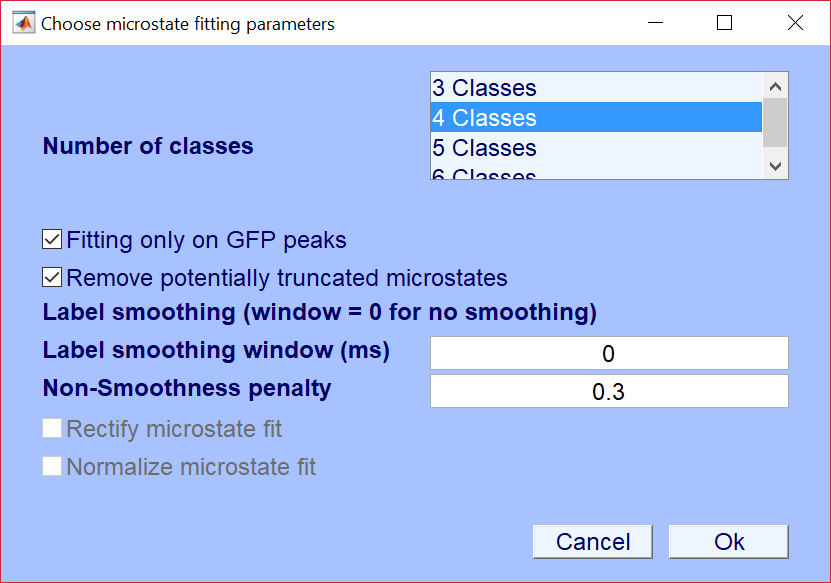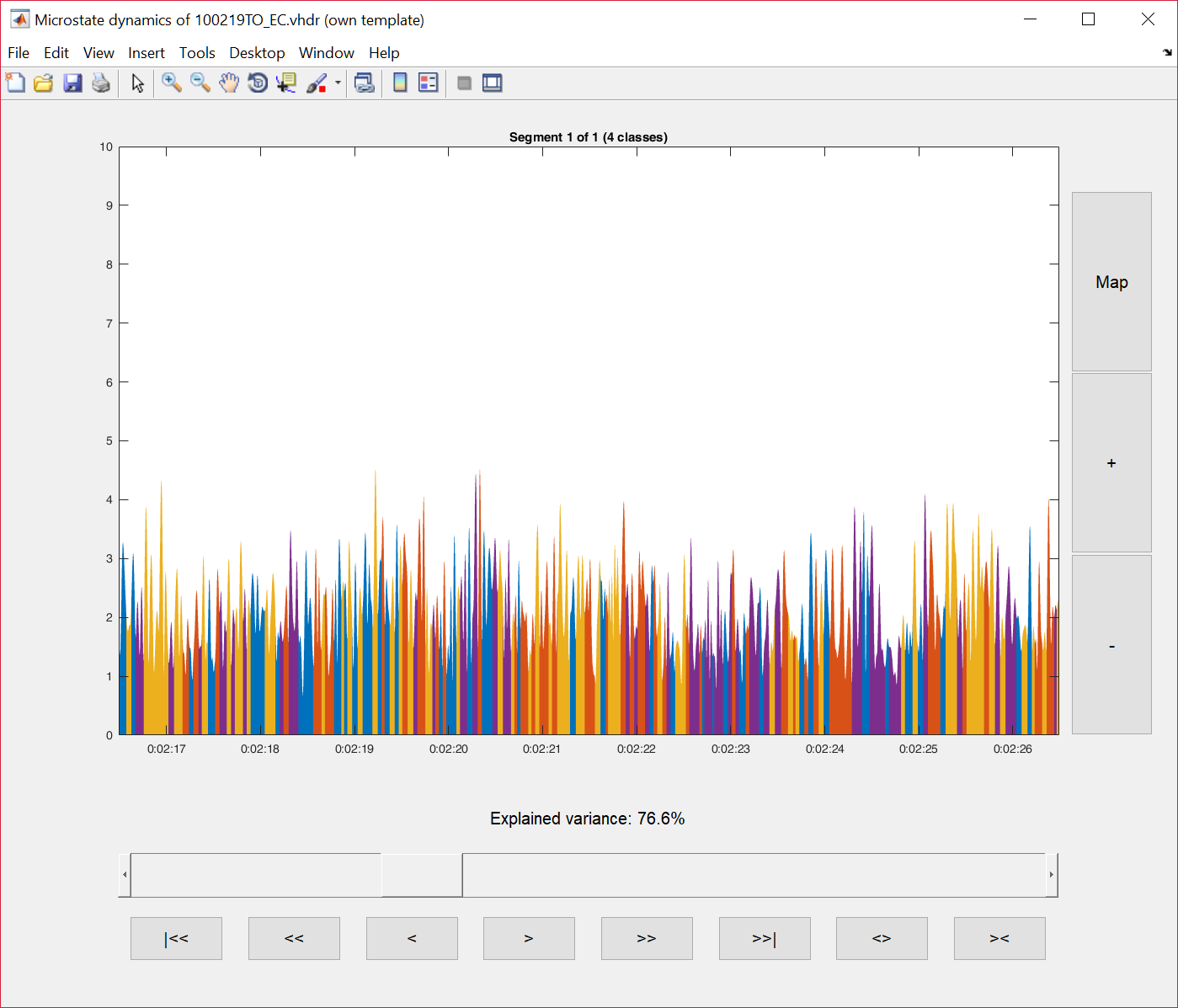Viewing and editing microstate class maps and their dynamics
Once you have computed microstate class maps on the individual or group level, you need to display them and eventually want to change their order or label manually. This is possible thru the menu "Plot->Plot/Edit microstate maps. If you choose "plot", the dialog returns control to Matlab / EEGLAB immediately, but you can only display things. If you choose "edit", you can do some manipulations, but need to close the dialog before continuing.
The dialog looks like this:
You can switch between different cluster numbers with the <Less> and <More> buttons, you can open a separate window with the dynamics of the corresponding EEG by clicking <Dynamics>, you can get some info using the <Info> button, and you can, if you are in the editing mode, manually reorder the maps using the <Man. sort> button. In the edit mode, you can also click on the map labels to edit them. If you change the order or labels of some microstate class maps and these maps had been used to sort other data before, the program attempts to clear the corresponding sorting information.
Alternatively, the analysis step can also be started on the command line or using a script. In this case, the function to be called is
[ALLEEG,EEG,com] = pop_ShowIndMSMaps(EEG,nclasses, DoEdit, ALLEEG)
typically followed by
[ALLEEG, EEG, CURRENTSET] = eeg_store(ALLEEG, EEG, CURRENTSET);
where the EEG contains the data with the microstate maps to display, nclasses is the number of microstate classes to display, DoEdit, if true, makes the dialog go modal and allows edits, and ALLEEG contains the structure array with all EEG data.
You may also want to display the temporal dynamics of the identified EEG microstates. This is possible thru the menu "Plot->Plot microstate dynamics" (eventually based on mean microstate class maps). The dialog prompts you for some fitting parameters and looks like this:
The display can also be evoked by the following function:
[ALLEEG, EEG, com] = pop_ShowIndMSDyn(ALLEEG,EEG,UseMean,FitPar, MeanSet);
where ALLEEG is the array of all EEG data structures, EEG is the data to be displayed, UseMean, if true, identifies microstate again some mean microstate class maps instead of the ones stored in the EEG structure, and the MeanSet is an EEG structure, or an index into ALLEEG that contains the mean microstate class maps to be used if UseMean is true. FitPar is a structure that correponds to the fitting parameters of the dialog, and contains the following:
- Number of classes / FirPars.nClasses: The number of microstate classes to use
- Fitting only on GFP peaks / FirPars.PeakFit: If checked / true, microstate labels between GFP peaks are defined by nearest neighbor interpolation.
- Remove potentially truncated microstates / FitPars.BControl: If checked / true, does not assign periods where microstates are truncated.
- Label smoothing window / FitPars.b: The window size for label smoothing (only applicable when not fitting to GFP peaks only)
- Non-smoothness penalty / FitPars.lamda: The non-smoothness penalty when smoothing labels.
The resulting display looks like this and is sufficiently self-explaining, I think:



